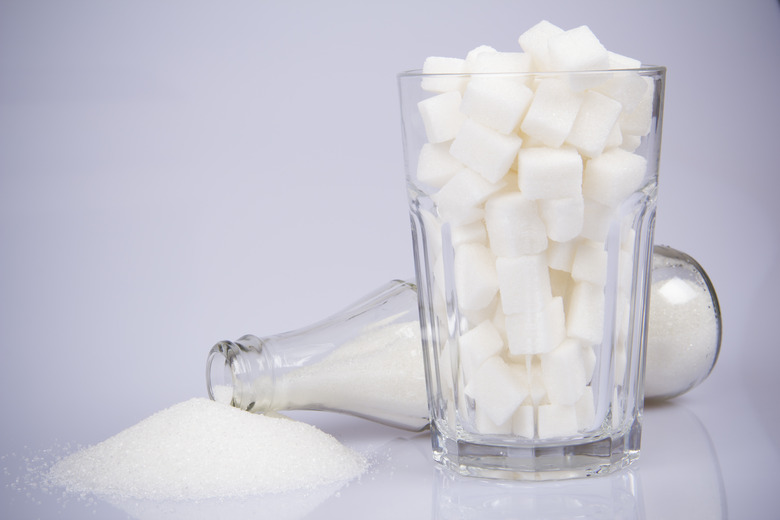How To Dissolve Sugar Faster
You may not be able to see the sugar you've stirred into your tea, coffee or hot chocolate, but it's still there. Rather than disappearing completely, it dissolves. When a solute is dissolved in another substance, a solution is created. So when you prepare your hot beverage, the sugar is the solute, the water is the substance and the finished product is the solution. Working out how to dissolve sugar faster involves some interesting experiments that you can easily carry out at home with sugar cubes and cups of water.
Break the Sugar Up
Break the Sugar Up
Energy, which is the capacity to do work or produce heat, affects the rate at which a solute will dissolve. Breaking up, crushing or grinding a sugar cube before adding it to water increases the sugar's surface area. The more surface area a solute has, the faster it will dissolve because more particles of the sugar can interact with the water. This means the finer the sugar particles, the faster it will dissolve. The sugar in the middle of a sugar cube is protected from the water by the sugar in the outer layers of the cube; the water has to go through those outer layers first. But if you crush the cube into a powder, all of the sugar is exposed to the water at once.
Stir the Mixture
Stir the Mixture
Stirring, or agitation, helps to disperse the particles of sugar throughout the water, which is another way of increasing the surface area of the sugar and accelerating the time it takes to dissolve. The stirring motion also increases kinetic energy, which increases the temperature of the solution – and that's the next way to make sugar dissolve more quickly.
Heat the Mixture
Heat the Mixture
If you add a sugar cube to a cup of room-temperature water and another sugar cube to a cup of hot water, you'll find that the sugar dissolves faster in the cup of hot water. The sugar particles move around and interact more at higher temperatures because the additional heat adds more energy to the process.
For each of the above methods, try putting your hand around the cup of room-temperature water while the sugar dissolves. You may feel a slight reduction in the temperature of the cup because dissolving the sugar requires energy from its surrounding environment. This is known as an endothermic change, or a change that requires energy to be added.
Note that if you add too many sugar cubes to the cup of water, they might not dissolve completely because the water may become saturated with the solute. In this case, some of the sugar will dissolve and the rest will gather in a solid state at the bottom of the cup. If you have added too much sugar by mistake, transfer the contents into a larger cup or container, add more water, and stir to help the sugar dissolve faster.
Cite This Article
MLA
Gillespie, Claire. "How To Dissolve Sugar Faster" sciencing.com, https://www.sciencing.com/dissolve-sugar-faster-8139941/. 26 April 2018.
APA
Gillespie, Claire. (2018, April 26). How To Dissolve Sugar Faster. sciencing.com. Retrieved from https://www.sciencing.com/dissolve-sugar-faster-8139941/
Chicago
Gillespie, Claire. How To Dissolve Sugar Faster last modified March 24, 2022. https://www.sciencing.com/dissolve-sugar-faster-8139941/
